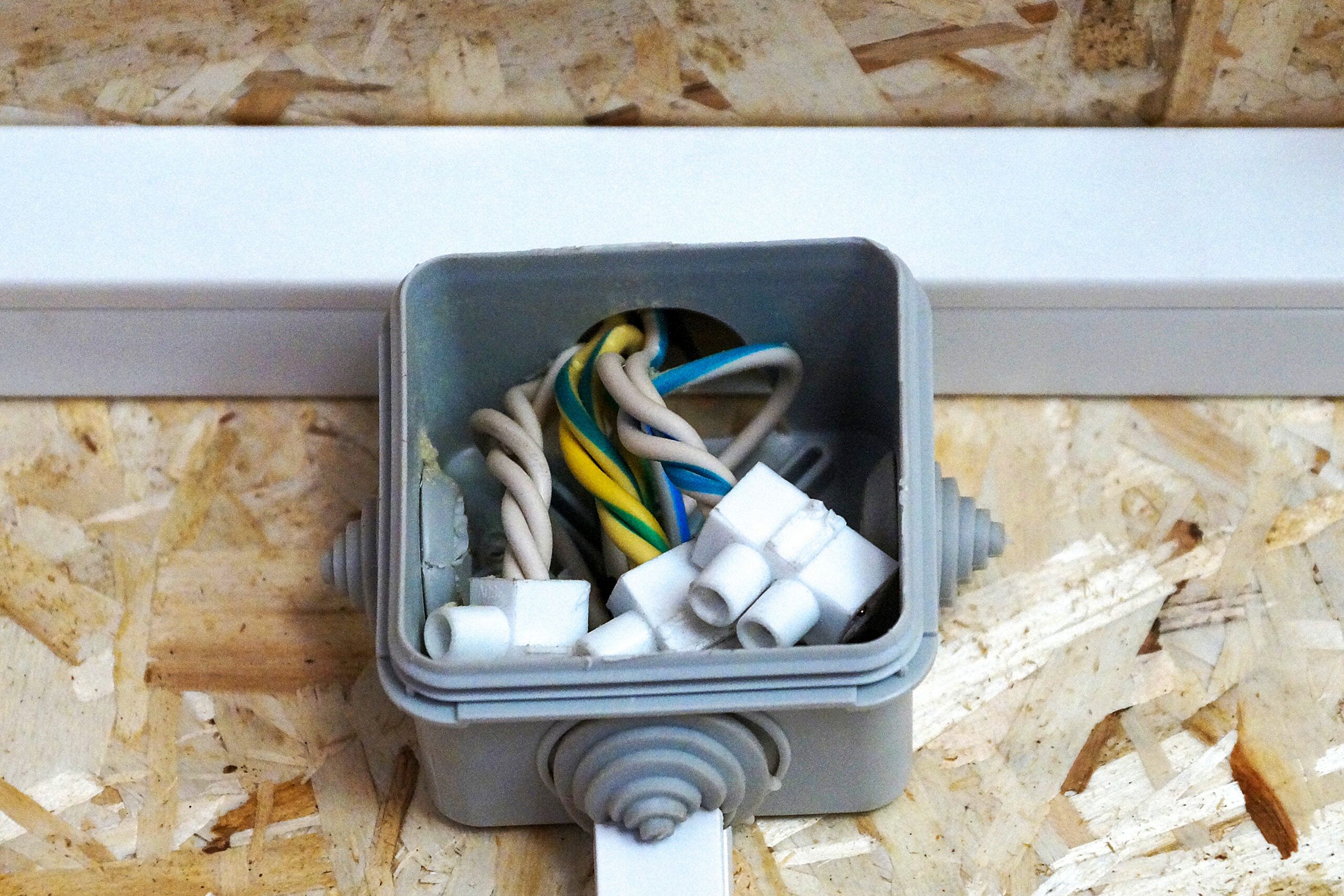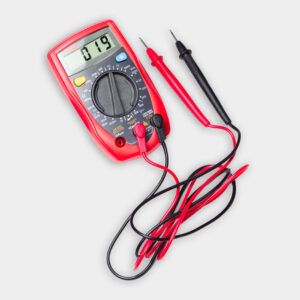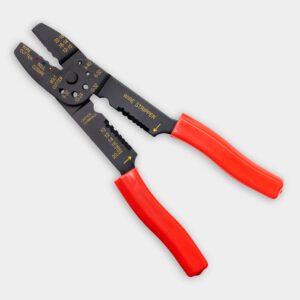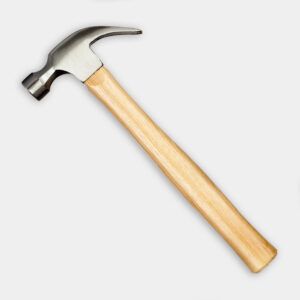We may be compensated if you purchase through links on our website. Our team is committed to delivering honest, objective, and independent reviews on home products and services.
A junction box provides a safe, code-compliant space for housing cable connections for outlets, switches, or splices. They prevent potential electrical shocks, and keep sparks from spreading to flammable surroundings.
If you’re not comfortable working with wires and electricity, you should hire an electrician to do this job for you. But with the proper safety precautions, you may be able to DIY this job at home. This guide will walk you through the steps.
Essential Tools and Materials Needed to Install a Junction Box
Gather the necessary tools and materials before starting installation.
Necessary Materials
- Code-approved electrical box
- Cable clamps (for a metal box)
- Wire nuts
- Screws or nails for mounting
- Electrical tape
Junction Box Size
Junction boxes are sized according to how many wires they can hold—because, among other things, an overstuffed junction box is a fire hazard.
The National Electrical Code has published a chart that determines a junction box’s correct size, based on the number and size of the conductors it must accommodate. The size of a conductor is expressed as AWG (American Wire Gauge); the smaller the number, the larger the wire. Common household wiring is usually 16, 14, or 12 AWG.
As an example, the code allows 2 cubic inches of space for each 14-AWG conductor, so if you have two cables with three conductors each (a total of six), you’ll need a box that’s 4″ x 2-⅛” x 1-⅞”, a minimum volume of 13 cubic inches. In most cases, the junction box manufacturer makes it easy by listing the number of connections that can run through the product.
Material Options: Metal vs. Plastic
Junction boxes are available in metal and plastic. Metal boxes are used for metal conduit or armored (BX) cable installations. They provide excellent durability and grounding capabilities.
Plastic boxes are more commonly used with non-metallic sheathed cables and offer benefits such as lightweight construction and resistance to corrosion.
Preparing for Junction Box Installation
Prepare for your junction box installation by taking the necessary safety precautions. Wear insulated gloves and safety glasses to protect yourself from potential shocks or debris. Ensure your work area is well-lit and free from obstacles.
Before starting any electrical work, turn off the power to the relevant circuit at the main breaker panel. Use a voltmeter or non-contact circuit tester to confirm that the power is indeed off before proceeding with the installation.
Choose a location for your junction box that is easily accessible and complies with local electrical codes. The box should be mounted securely to a stud or joist, with its face flush to the wall surface. For exterior installations, select a location that provides protection from direct exposure to the elements.
Step-by-Step Junction Box Installation Process
After you verify that the circuit is powered down, you can start installing your junction box.
1. Attach Box to Stud
If you’re installing an interior box, use screws or nails to attach the box to a stud, positioned so that the face of the box is flush with the drywall. Exterior boxes should be attached with screws; the back of the box should have small holes for that purpose.
If you have a metal box, use a screwdriver as a lever to remove the knockouts (the precut metal discs on either side of the box). You’ll also need to install cable clamps in the metal box. These thread into the box from the outside. Plastic boxes have internal clamps.
2. Run Cables
Bring the cables into the box through the clamps. Make a mark on the cable about ½ inch beyond the clamp. Withdraw the cable, measure and cut the conductors about 6 inches beyond the mark. Strip the cable’s plastic or metal sheathing back to the mark.
Bring the cable back into the box. If it’s a metal box, tighten the cable clamps onto the sheathing. Plastic box clamps are typically self-tightening.
3. Strip Wires
Wire strippers have gauged cutters for various sizes of wire. Choose the proper gauge for the wire you’re using, then test the gauge by placing the end of one conductor into the stripper, squeezing down to score, and pull off the insulation.
Examine the conductor. If you’ve cut or damaged some of the wire, use the next larger gauge. Use the wire strippers to remove ¾ inch of the insulation from the end of each conductor.
4. Join Ground Wires
When all the conductors have been stripped, join the bare copper or green insulated ground wires first.
Use pliers or the gripping end of the wire strippers to twist the ground wires together, then twist a wire nut onto the wires to keep them together.
Note: If you’re working with a metal box, you’ll need to add a pigtail (a separate 4- to 6-inch length of ground wire) to the other grounds and connect it to the green ground screw located inside the box.
Wrap the pigtail clockwise around the screw and tighten the screw. Be sure to use the correct size wire nut: if the nut is too small, the wires won’t fit, and if it’s too big, the wires could loosen and fall out.
Wire nuts are color-coded for AWG and capacity, both of which are also listed on their packaging. For instance, an orange wire nut is rated for use with a minimum of two 18-AWG wires to a maximum of three 16-AWG wires.
5. Join Hot (Black) and Neutral (White) Wires
Now connect the neutral (white) wires, then the hot (black) wires, following the procedures outlined in Step 4. Give the wire nuts a tug to make sure they’re on tight and there are no loose wires.
6. Finish the Installation
Carefully and neatly fold the joined wires back into the box. Place the cover onto the box front and tighten the screws. Turn the power back on and check to see that your connections are working.
Troubleshooting Common Issues With Junction Box Installation
Even with careful installation, you may encounter some issues. Here are some common problems and their solutions:
Loose Connections
If you experience intermittent power or hear buzzing from the box, check for loose connections. Turn off the power, remove the cover, and inspect all wire nuts and connections, tightening them as necessary. Loose connections can lead to overheating and present shock hazards.
Incorrect Wire Sizing
Using wires that are too small for the current load can cause overheating. Ensure you’re using the correct wire gauge for your application, consulting the National Electrical Code if necessary. If the wire gauge is undersized, you might need to re-run the correct gauge to prevent overheating and potential fire risks.
Overloaded Junction Boxes
An overloaded box can lead to overheating and potential fire hazards. If you find your box is crowded, consider upgrading to a larger size or adding an additional junction box to distribute the connections. Overcrowding can strain the connections and compromise electrical safety.





